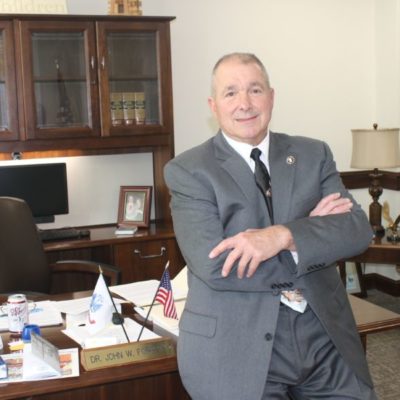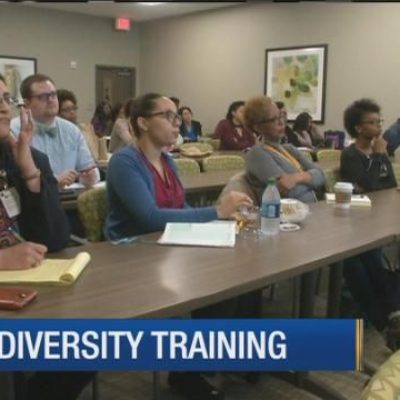Skandera: From 240 Winning Proposals From Around the Country, 4 Key Themes Emerge for Building a Pathway 2 Tomorrow
With a new year, new opportunities present themselves. This week, Pathway 2 Tomorrow: Local Visions for America’s Future announced its new $100,000 Innovation Award as part of its $430,000 investment in 24 locally responsive education solutions, spanning 17 states and the District of Columbia. With the support of more than 75 partner organizations, P2T solicited proposals from around the country and garnered 240 bold education solutions from all types of stakeholders — parents, entrepreneurs, researchers, and education leaders — from rural, suburban, and urban communities in 39 states.
Despite this diversity of geography and voices represented in the submitted proposals, four clear themes emerged that are informing our path forward.
1. Disrupt the Traditional Education Pathway
Within the numerous proposals submitted to P2T, and in policy conversations across the country, there is a clear push to blend K-12 and higher education and/or workforce preparation opportunities to blur the traditional system lines. There is a recognition that our siloed systems are failing to consistently deliver on the promise of college and career readiness for all students. Winning proposals from the Austin Chamber of Commerce, “Opportunity Austin: College and Career Readiness and Placement,” and YouthForce NOLA, “Real-World Skills for Real-Life Success,” are just two examples of efforts to prepare students for the successful pursuit of and placement in high-wage, high-demand career pathways or postsecondary education.
2. Put Each Learner at the Center of His or Her Education
Personalized learning, education of the whole child, and new instructional models focused on high-quality curriculum are emerging — and at least one of these is featured at nearly every major education gathering. Within the P2T proposals were numerous solutions for all learners along the continuum of education and a newfound focus on orienting the return on investment not solely toward core academic subjects but also on preparation of students as productive, contributing citizens. As an example, within this theme, the winning proposal from the Johns Hopkins Institute for Education Policy utilizes a curriculum tool to enable leaders to make the best curricular decisions in English language arts for the students they serve by mapping knowledge domains and providing critical analysis and reports to identify potential gaps.
3. Elevate the Education Profession
We have seen a surge in conversation, policy, and action that highlights how important teachers are when it comes to student success — whether in terms of salary pay, teacher voice in shaping policy, or preparation and professional development — and the imperative to keep teachers front and center in education transformation cannot be overlooked. As teacher shortages continue — and, in many regions, worsen — the need to re-envision the role and stature of educators must be deliberate and aligned with the value we know they bring to the classroom. For example, a winning proposal by The Center for Transformative Teaching and Learning, “Neuroteach Global,” provides an innovative approach to professional development through a series of micro-learning experiences, using technology to revolutionize how educators develop their understanding of the science of learning and their ability to translate research into action.
4. Leveraging Resources and Relationships
Failure over the past few decades to include those most affected when it comes to policy and practice has been clearly recognized. Numerous proposals captured this mandate and went even further in pushing for a broader tent. For example, P2T’s Innovation Award co-winners, the Prichard Committee for Academic Excellence’s Student Voice Team and the Iowa Department of Education, illustrate the authentic engagement of students as partners in education policymaking.
In addition to these themes, a few noteworthy observations emerged within the 240 P2T proposals. First, an increase in the public and private sectors working together to initiate more entrepreneurial ideas and solve problems. And, second, a shift away from quality control (Do you have a diploma?) to quality assurance (How can you assure me you can do the job?). These are important trends to acknowledge as we continue to look for new ways to deliver on education’s promise. While we cannot abandon the foundational work of the past 20 to 30 years — a call for higher standards, greater transparency, and accountability, and increased equity and opportunity via choice — we cannot ignore the need for our system to be agile and adaptable, and proactively develop new ways to prepare the next generation in an ever-changing world.
As we look ahead, we should continue to challenge ourselves to chart a path that is locally and regionally responsive, doesn’t abandon the necessary and courageous work of the past few decades, and is relentlessly committed to building and delivering a better education for future generations. We all know education transformation is not for the faint of heart. It is hard work. It requires a commitment to work together and courage to see it through. These themes and the game-changing ideas represented in P2T proposals and emerging across our country are by no means a silver bullet; however, they can provide a framework for moving forward, for doubling down on our commitment to deliver on education’s promise.
In 2019, P2T and its partners will support the winning ideas, transforming them from three-page proposals into scalable impact plans. Through partnership, these ideas will be shared and matched with leaders, communities, states, and regions for implementation across the country.
[Read more at The 74]


